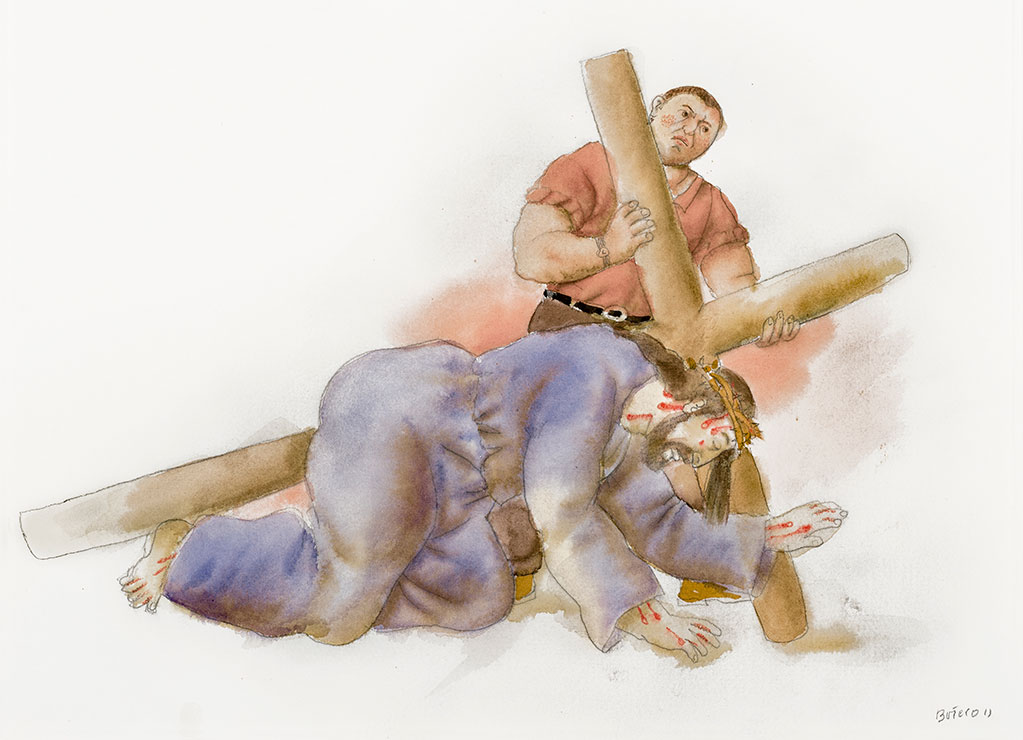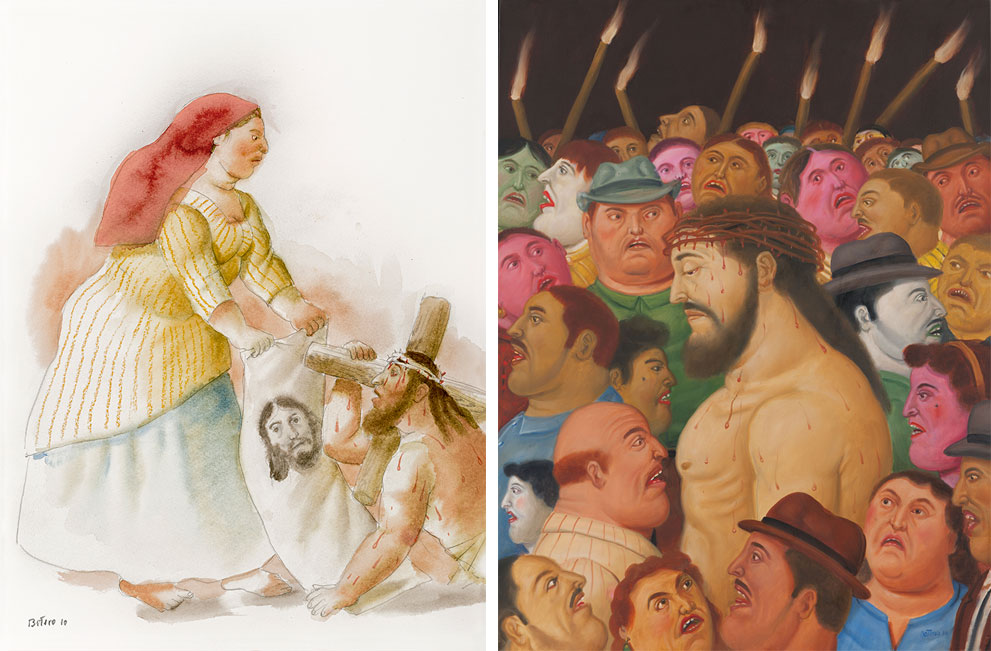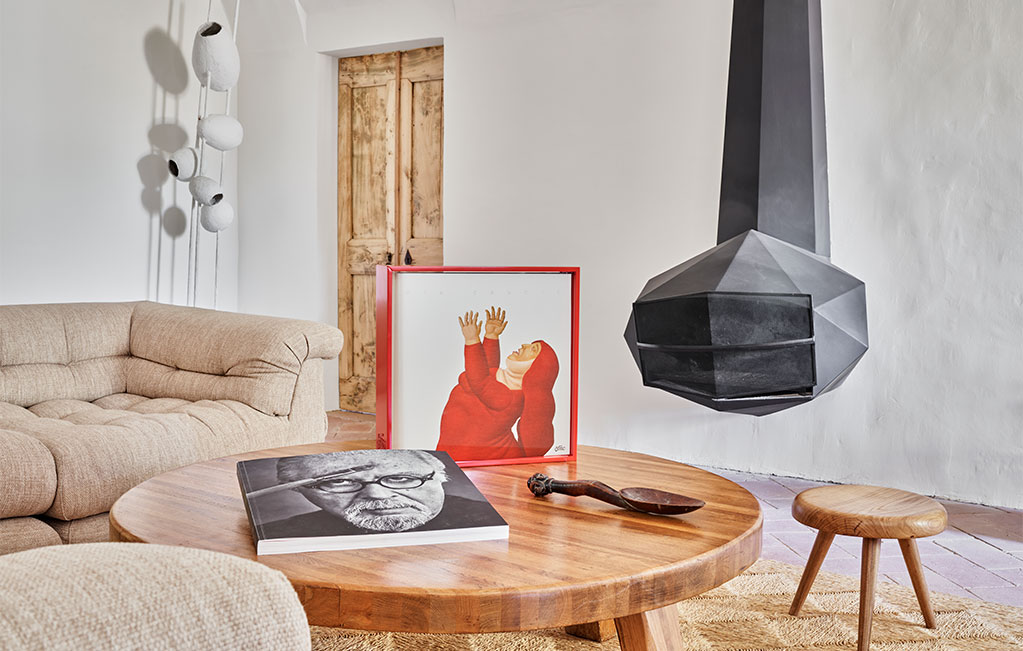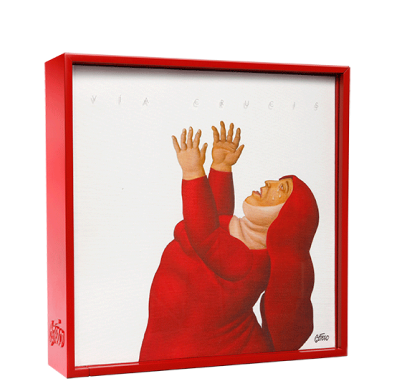Botero’s homage to his homeland: Vía Crucis
From 2010 to 2011, Botero created a series inspired by Christ’s Stations of the Cross. The result transcends the religious roots of the theme, incorporates memories from the artist’s childhood and speaks of pain and empathy. Based on this series, and with the artist’s collaboration, ARTIKA presents an edition that connects the history of art with the memories of the Colombian painter and sculptor.
A creator with ties to his homeland
“Vía Crucis”, the Stations of the Cross, refers to the steps that Jesus took from the time of his arrest until his crucifixion, as described in the Gospels. It is a story that has inspired countless masterpieces over the centuries.
Botero succeeded in applying his inimitable style to the biblical story, preserving the essence or the facts while offering an original point of view that was, most of all, a tribute to his homeland. All these elements make Vía Crucis one of the most significant pieces of his career.

Fernando Botero along with his wife, Sophia Vari, at the launch of the exhibition Vía Crucis in 2012 in Medellín, Colombia
Colombia has always played a major role in Botero’s work, and during his childhood he was marked by the paintings and sculptures that he saw in churches. This commitment is also evident in Vía Crucis: Botero donated the originals of the series to the Antioquia Museum in Medellín.

Simon Helps Jesus | 2011 | Watercolor and pencil on paper | 11.8 × 15.7 in | Inv. 4176
A unique style for a universal theme
Botero’s signature language encompasses elements like humour and tenderness, but this series always demonstrates how his expressive talent is also effective in capturing violence and bitterness.
Botero also incorporates modern settings and characters into the episodes of Vía Crucis. For example, he places Christ in landscapes of his native Antioquia, sometimes surrounded by Colombian soldiers.

Jesus is Taken Prisoner | 2011 | Watercolor, pencil and colored pencil on paper | 15.7 × 11.8 in | Inv. 4156
El azote [The Lash], 2011. Oil on canvas, 123 × 94 cm. Museo de Antioquia, Medellín, Colombia
Drawing on anachronism is an age-old technique: many classical representations of the Passion of Christ incorporate elements from the artist’s own time, adapting the message of the Gospel to the community for which the works were made.
In this sense, Botero’s style is open to several readings by establishing parallels with the Colombia of his childhood and, by extension, with our world today – his work transcends all physical, cultural and stylistic frontiers.
Beyond tradition
Botero’s Vía Crucis contains sacrifice and pain, blood and tears, cruel blows and kisses that belie a deep betrayal. All these elements are rooted in religious tradition, but Botero knows how to adapt them to his humanist vision.
Each scene depicts the characteristic roundness of his characters, and the composition always includes a drama played out by flesh-and-blood subjects, men and women who suffer, hate or impassively watch the pain of another human being.

Jesus and Veronica | 2010 | Watercolor, pencil and colored pencil on paper | 15.7 × 11.8 in | Inv. 4173
Jesús y la multitud [Jesus and the Crowd] 2010. Oil on canvas, 106 × 81 cm. Museo de Antioquia, Medellín, Colombia
The intensity of each of these works is not only a consequence of the nature of the chosen theme (the Passion of Christ) but is the result of Botero’s ability to arouse emotion through forms, brushstrokes and colours.
Influences and homage
Renaissance art became part of Botero’s creative personality the moment that he first admired the work of Piero della Francesca in person during his formative years.

Diptych of the Dukes of Urbino, 1465 – 1472. (Battista Sforza). Tempera painting on board, 47 cm × 33 cm. Galería Uffizi, Florencia, Italia
After Piero della Francesca (diptych), 1998. Oil on canvas, 204 x 177 cm (each one). Private collection
The Passion of Christ was a central theme in the art of the 13th, 14th and 15th centuries, but it practically vanished from the discourse in the 19th century and onwards. Botero decided to revisit this theme from a perspective that shows how human emotions transcend ages and beliefs.
Likewise, Botero offers a journey through the history of art in a series that elevates the artist to the level of the classic masters like Michelangelo, El Greco, Rubens, Fra Angelico, Rembrandt and Velázquez.
The art book that illustrates why Botero is unique
ARTIKA presents an exclusive edition of Vía Crucis, a cornerstone of Fernando Botero’s legacy.
This Art Book includes the complete series of drawings and paintings through which Botero depicts his personal interpretation of the Passion of Christ.
The prints included in the Art Book faithfully reproduce the original drawings, crafted in pencil and watercolour on paper.
All the elements of Vía Crucis are thoroughly examined in the articles in the Study Book, written by the most widely recognised voices in the study of Botero’s work.
- Numbered edition limited to 2,998 copies.
- Fernando Botero participated in every phase of the project.
- It includes two volumes, presented in a modern and exclusive display case.
- The artist hand-signed 200 copies of the edition.

